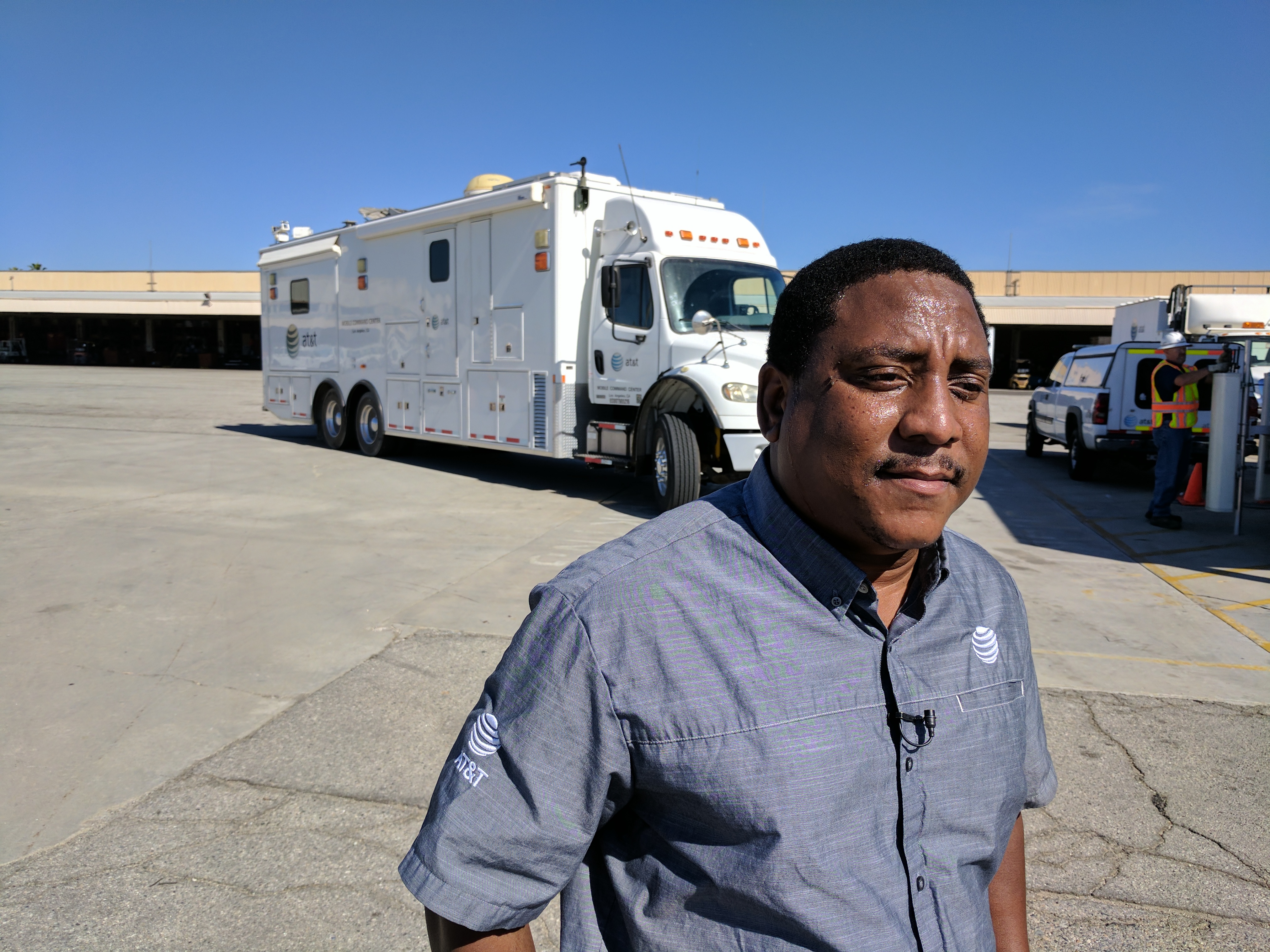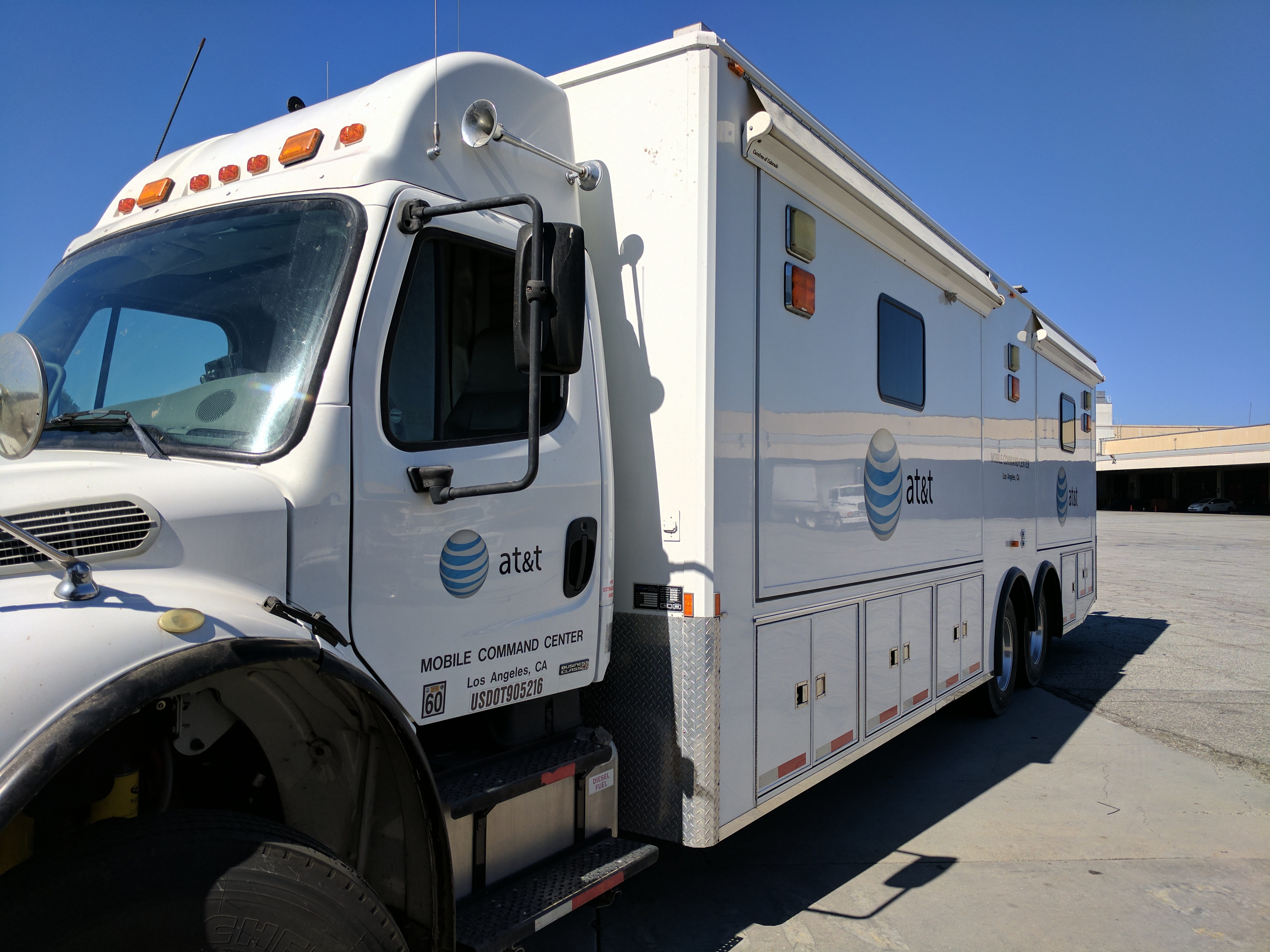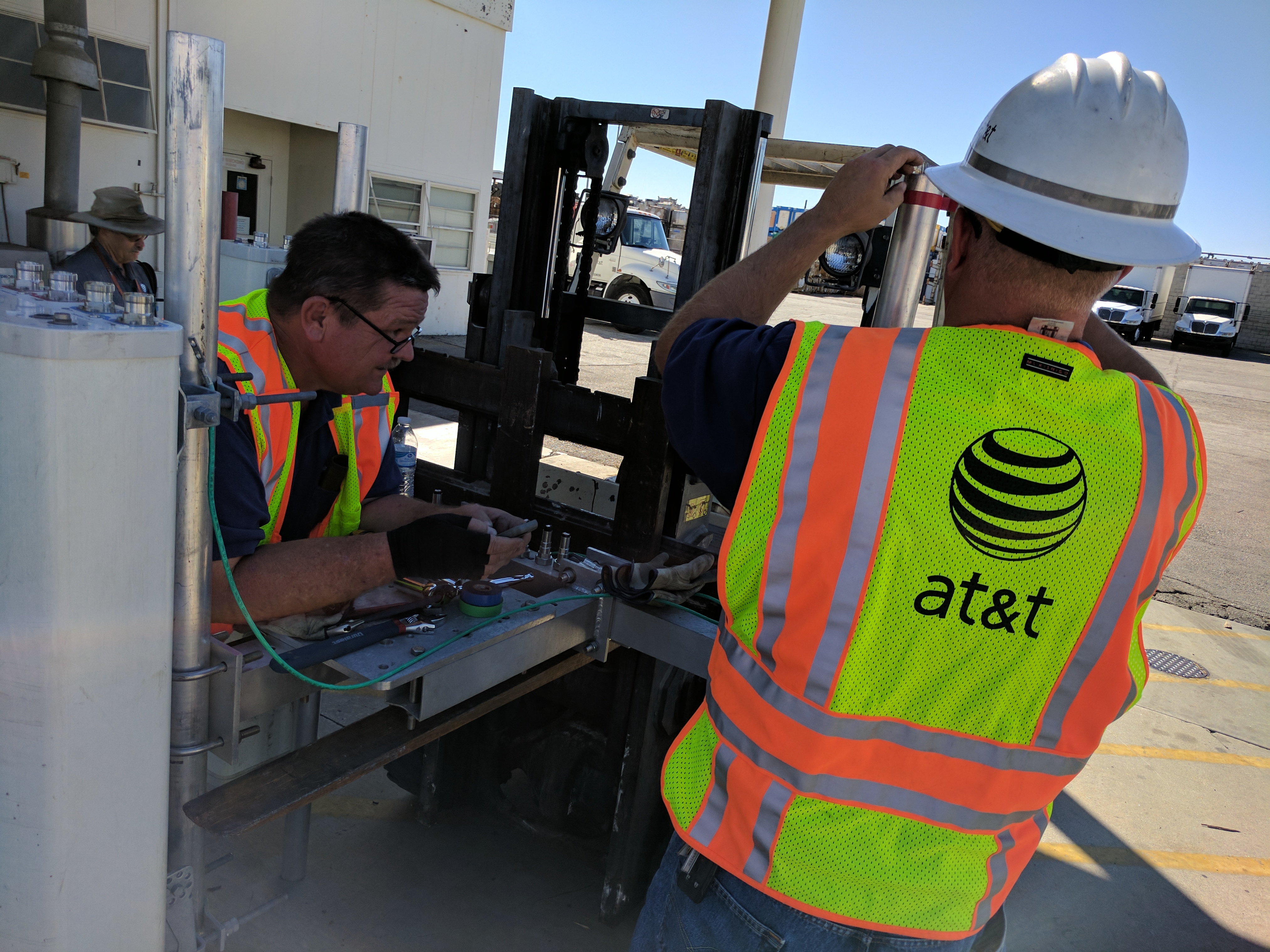During a natural disaster, every bit of communication counts. Here’s how companies like AT&T keep the network running when things are awry.
Promotional Consideration Provided by AT&T
We count on our cell phones for a lot of things – calls, social media and more. That’s why it’s important for them to continue working no matter what. Recently I visited with the Network Disaster Recovery team at AT&T to find out how they keep the signal going even in the face of challenging circumstances.
Follow KTLA Tech Reporter Rich DeMuro on Facebook or Twitter for cool apps, tech tricks & tips!
Wildfires, hurricanes and even large scale events like Coachella can wreak havoc on cell towers. That’s why there is a team of people monitoring networks 24/7 so if something isn’t right they can deploy the right equipment to make it better.

I talked to Damon Williams, senior project manager at AT&T. He explained how cell towers can be wiped out in a natural disaster, which results in a signal loss for nearby customers. It’s not only inconvenient, but it can be a safety issue when people can’t get calls through to loved ones.

Until cell towers can be repaired, Williams’ team can bring in temporary equipment. There are COLTs, which are cells on light trucks – these can be driven into an area. Then there are COWs, which are cells on wheels – these are mini cell towers on a trailer that can be rolled into an area. If the area is super tricky, like high up on mountain terrain, there is an ATV with a POD on the back that can also provide a signal to those in the area.

You’ll often see some of this equipment in place outside of big events like music festivals and major sporting events.
Finally, the team does a full scale recovery drill a few times a year, working with first responders, so everyone knows what to expect. Working in the background to keep us connected, so we don’t have to think about where our signal is coming from – just that it works.














